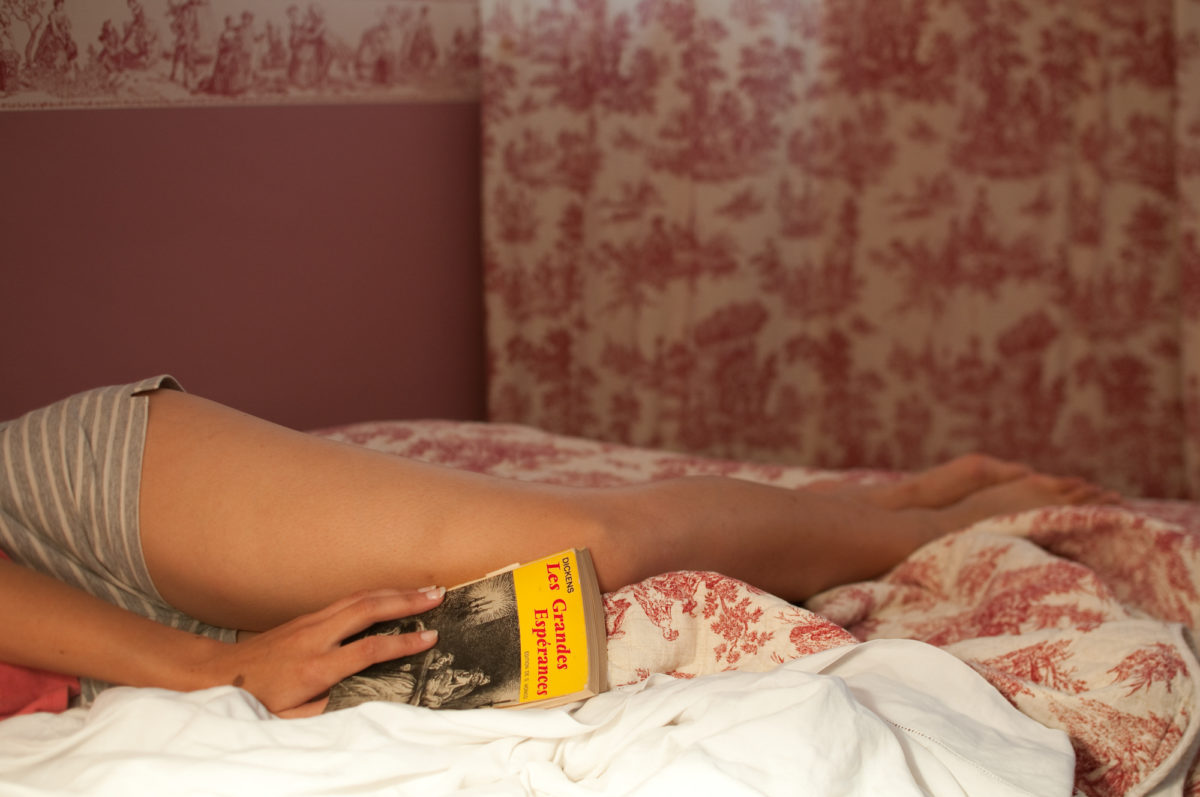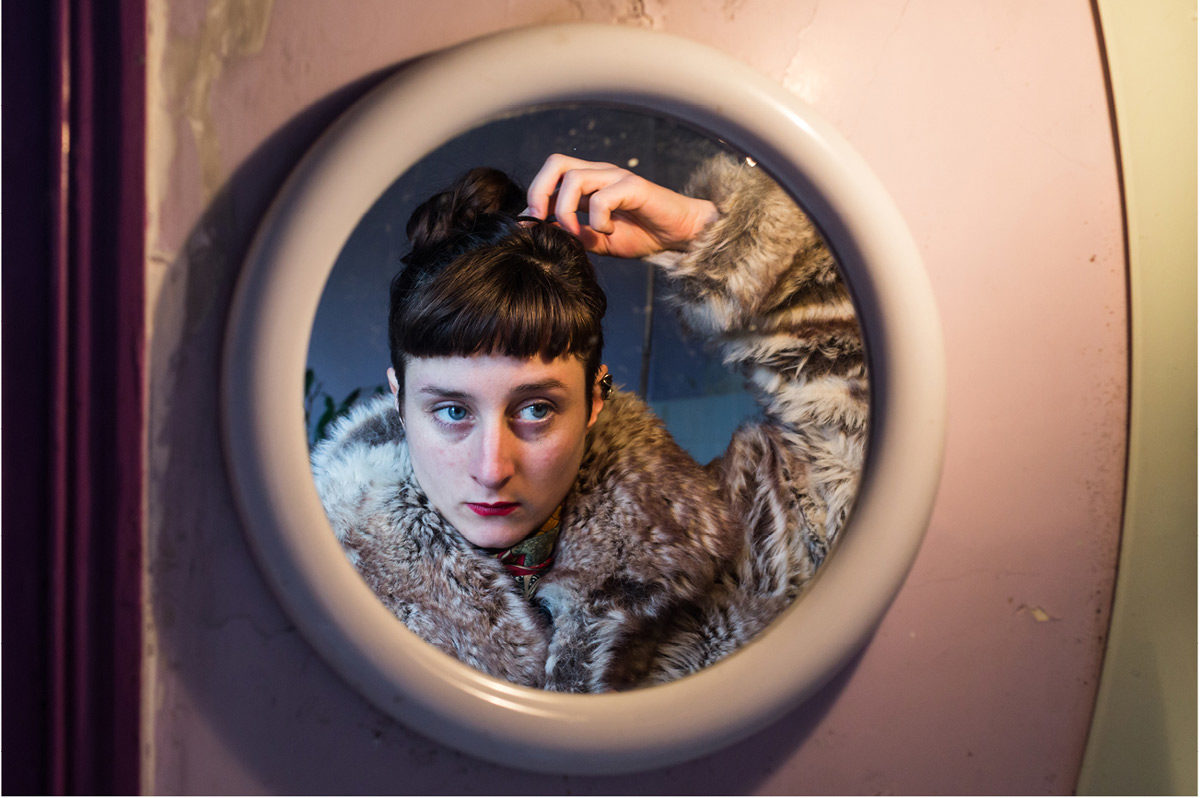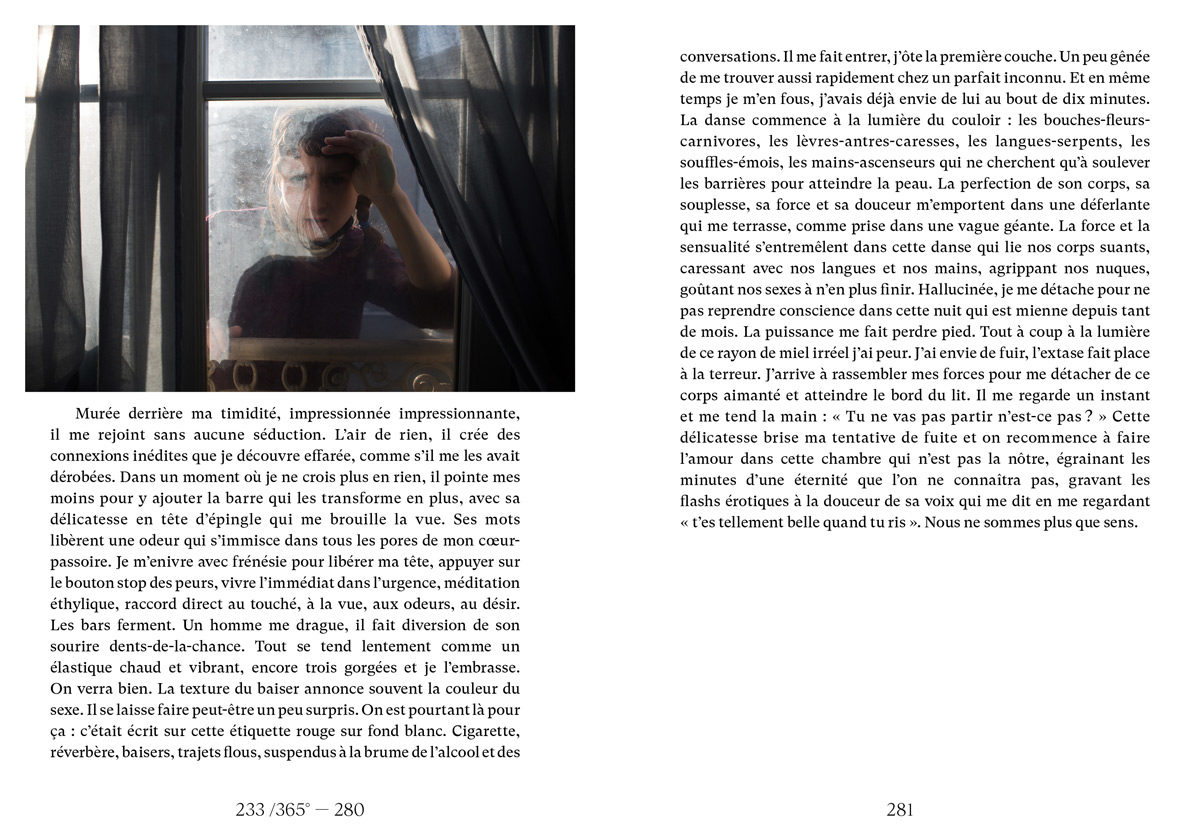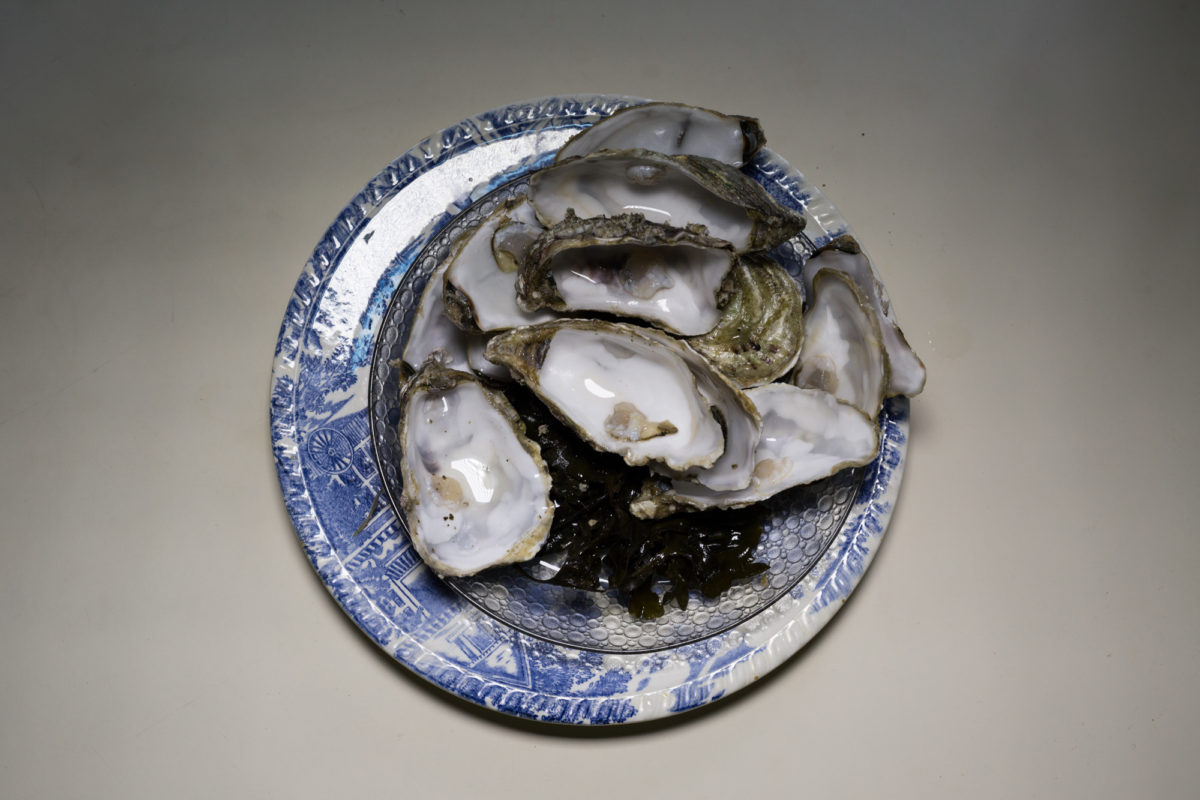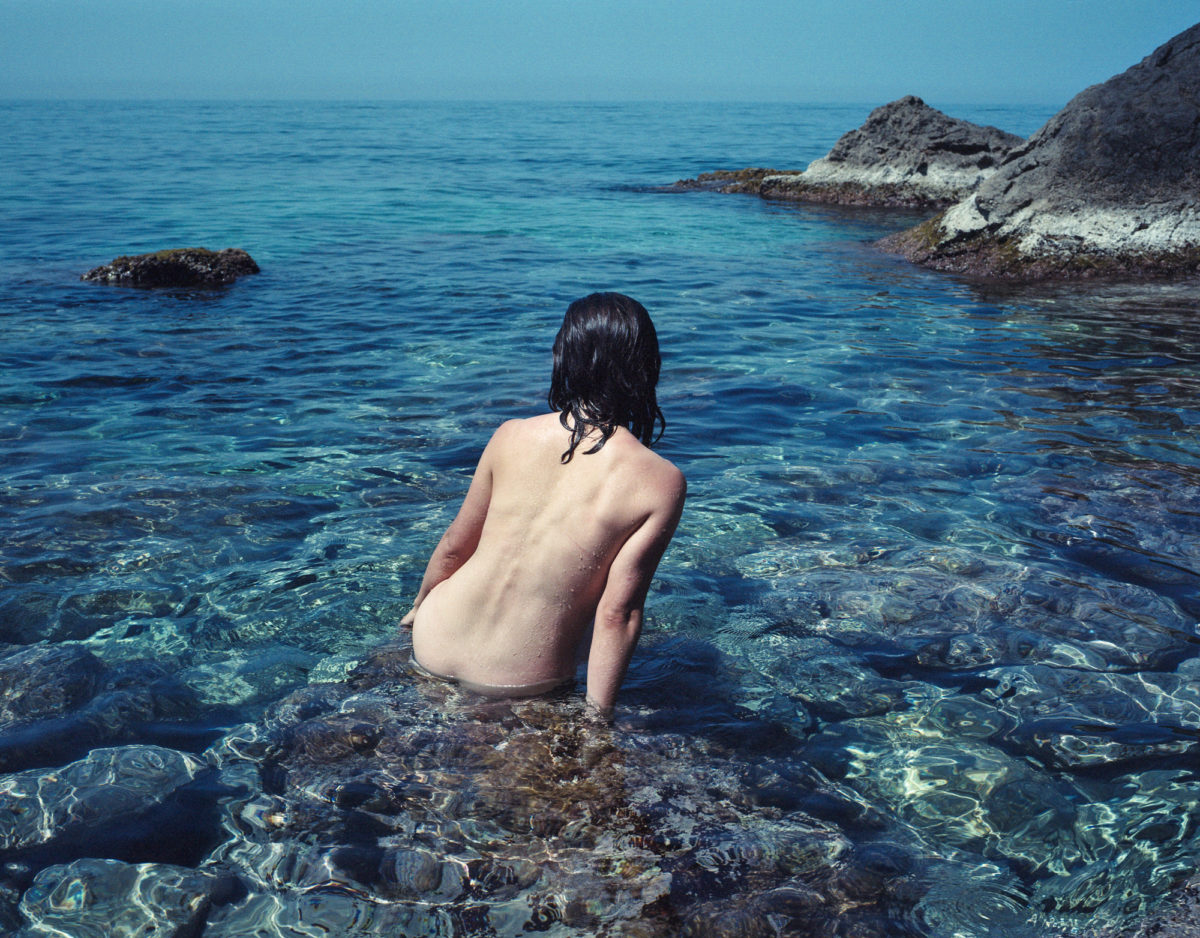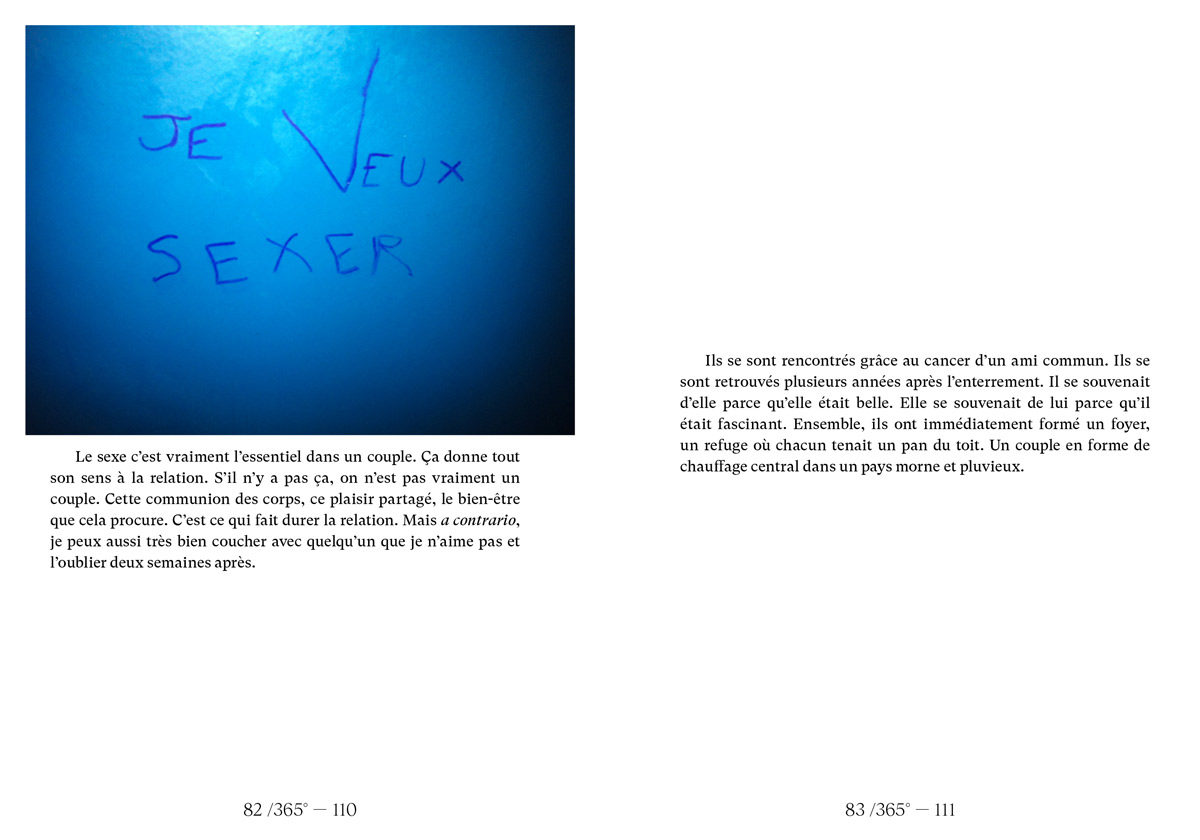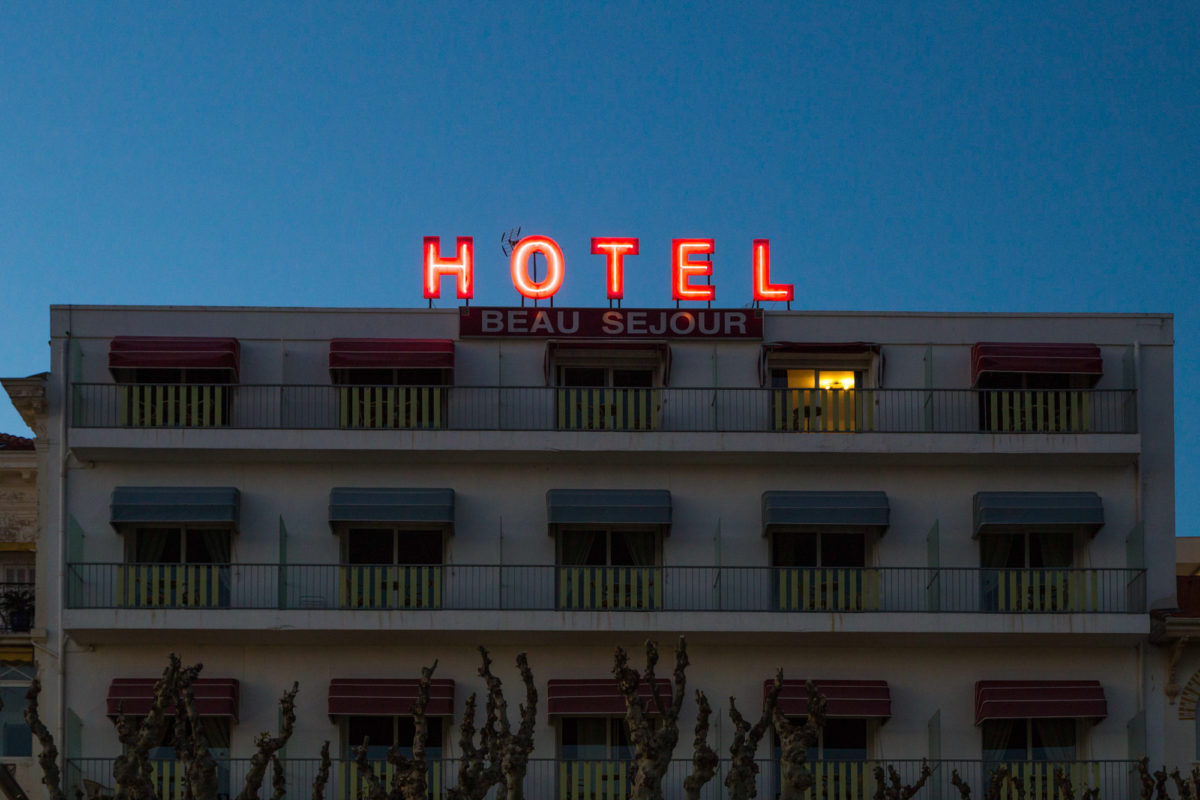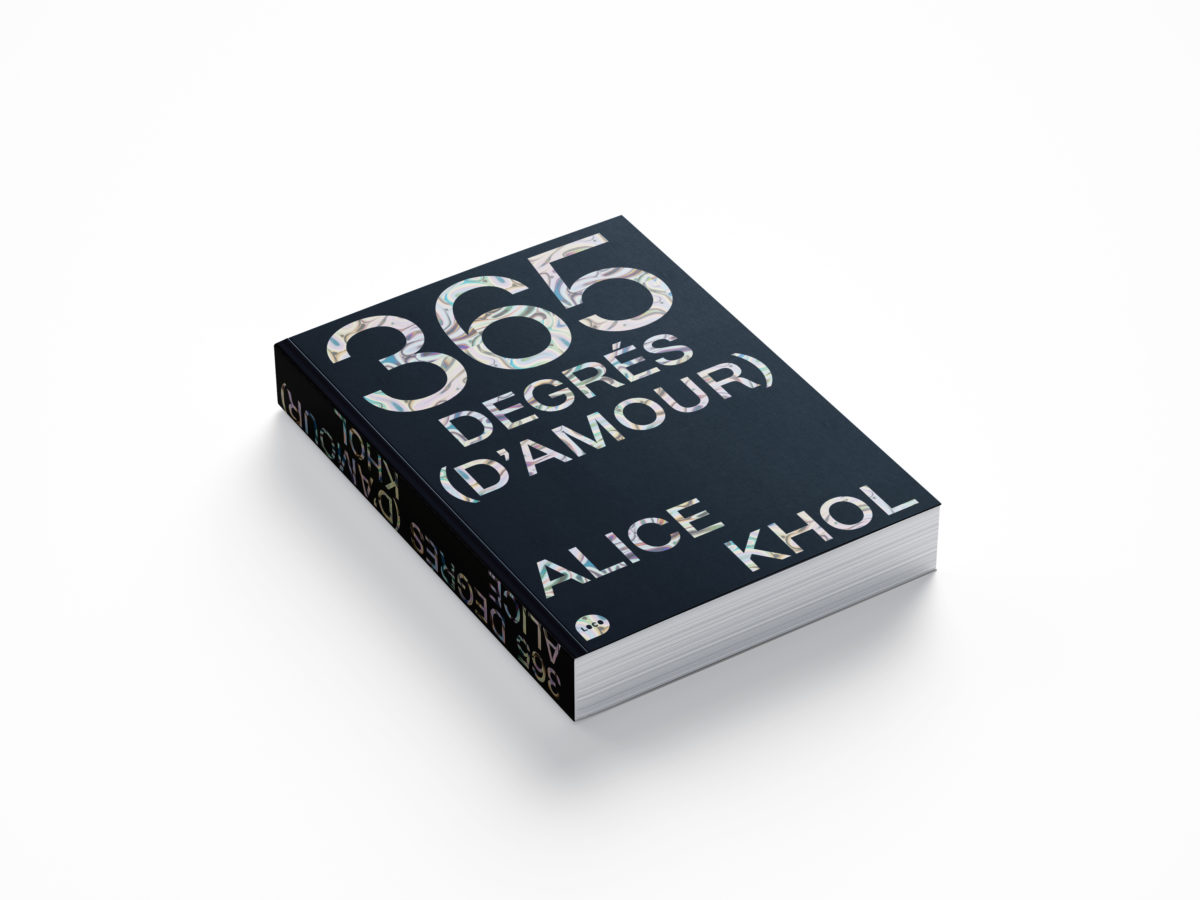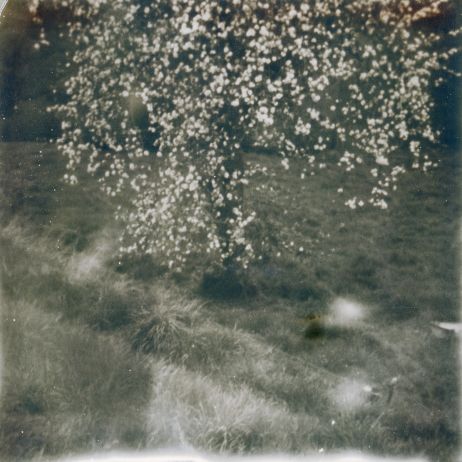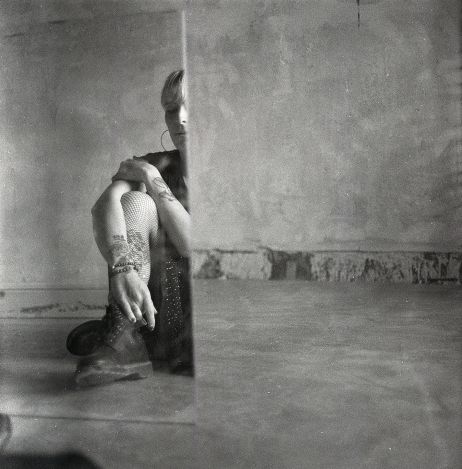Love? A broad subject. One that 38-year-old French photographer Alice Khol, based in Brussels, decided to study through words and images, and with many different angles – 365 precisely. Encounter with the author of 365 degrés (D’amour), a book – or rather a poetic ethnography – published by Loco editions.
Fisheye: Photographer, writer, sociologist, lover, or seeker of love… Who are you?
Alice Khol: This is a good question. I do not really wish to define myself – others do it for me. One could say “artist”. It is the fittest term, when ones start expressing oneself through several mediums. An artist who finds her inspiration in real life. But which artist does so? Today, I am a photographer, but I also produce videos for musicians, documentaries, and I write poetry.
Could you tell me about your experience?
I’ve studied in Rennes, France. I have a master’s degree in sciences of information and communication, and a bachelor’s in cinema. I started taking photographs when I arrived in Brussels – while working as a coordinator and programmer for film festivals. I attended evening classes at the Agnès Varda School of Photography and Visual Techniques. An intense training, when you have a full-time job on the side: 9 hours of class per week, many projects to submit, and exams to sit through all year long.
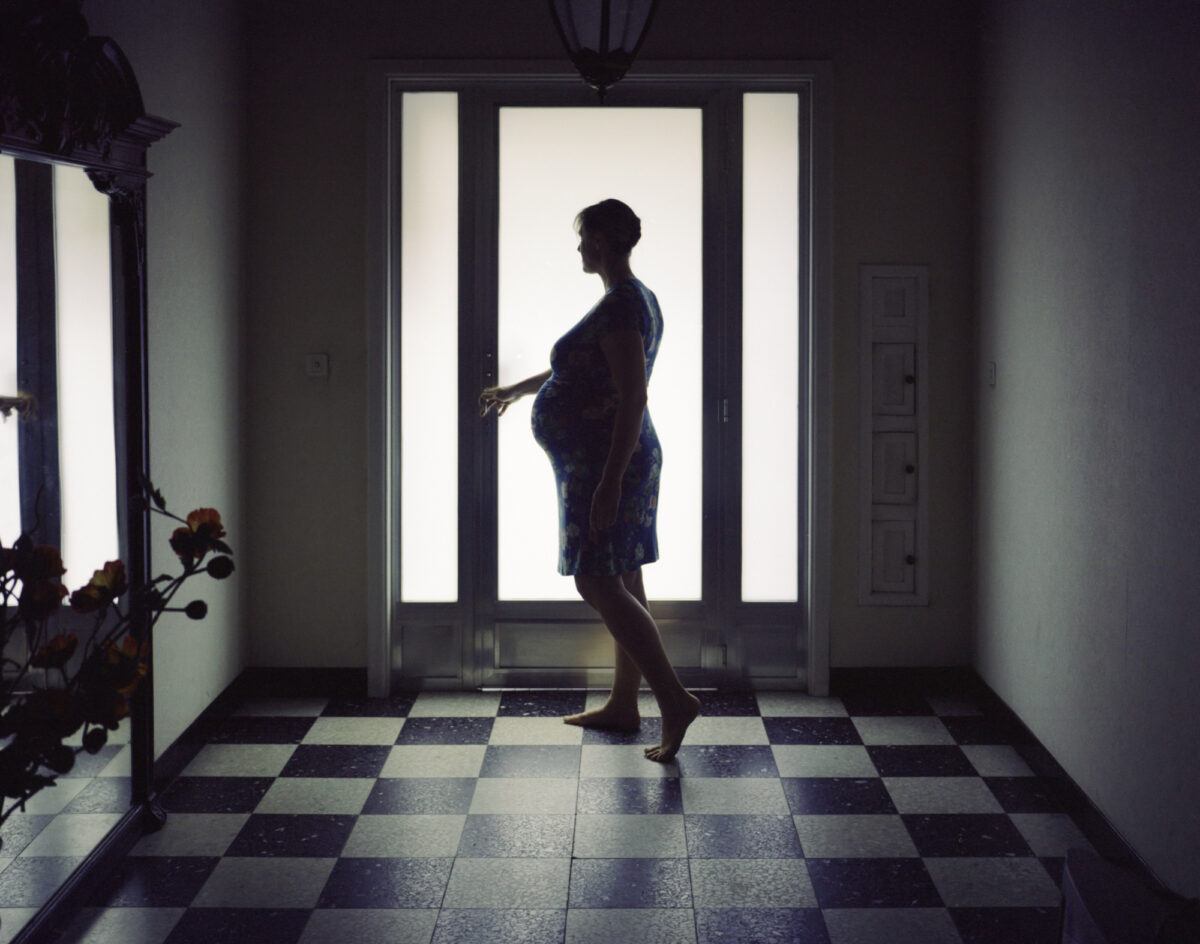
What was the genesis of your project 365 degrés (D’amour)?
Love has interested me for a long time – I do not know why, we all have our obsessions. It is a topic that can frustrate and carry us at the same time. The ultimate Grail: “You are miraculous: unreachable and yet still there.”
It all started with a complicated love story, and blog created in July 2015. When the book was born, I decided to delete the website. 365 degrés (D’amour) is the final form of this project, and I did not want the draft to exist somewhere else. What is more noble than a book? I wanted a lasting object. One could view this project as a diary written by many people.
What are the book’s intentions?
I wanted to talk about love – obviously. Victories and disappointments, miraculous or traumatizing experiences, life-saving or absurd routines. I want to document its many faces. As love is not all about romantic and sentimental relations, I chose to question our bounds. What does love mean? In our everyday life, how does it appear? I also wanted to highlight situations where love is absent, and the relation is a mere power struggle. Is it possible to escape these unhealthy relationships? I have no answers – and would probably be rich if I had. I don’t see myself as a journalist or a sociologist, but I do observe and ask myself many questions. The book is a poetic translation of my thoughts, which – I hope – help sooth disarray.
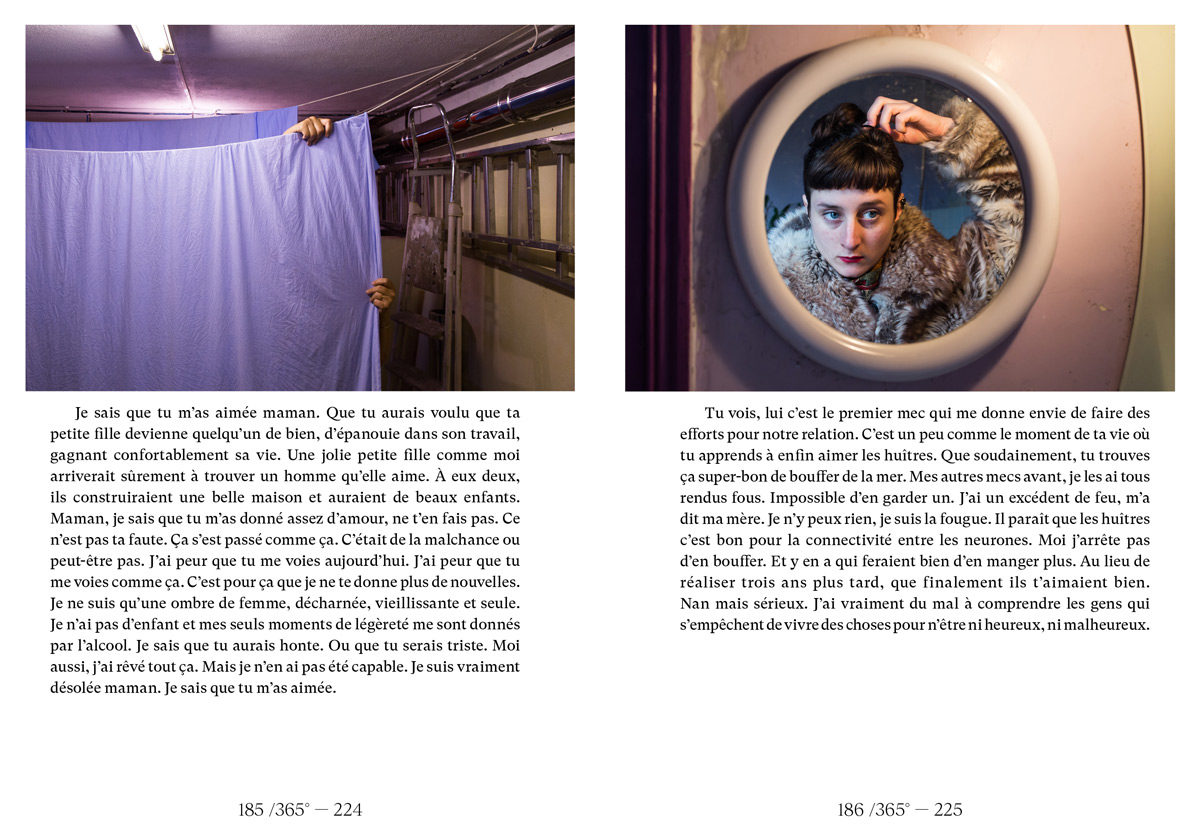
What where the themes you absolutely wanted to tackle?
Although the narrators’ ages are varied, the project is set in a space and time where our relation to love is complex. The rules of society regarding relations have become more flexible. Single and homosexual parenthood, being polyamourous or celibate: everything is now possible. And dating apps keep developing relations more and more. This is not a lure: our consumers society has pushed us to consume each other.
Feminine masturbation, encounters through apps, marriage, adultery, break-ups… I’ve tackled so many subjects. There are, in 365 degrés (D’amour) multiples stories introducing protagonists who keep waiting – a collection of relation trends that did not exist before. When I read La rose la plus rouge s’épanouit (The reddest rose blossoms, ed.) by Liv Stömquist, or La fin de l’amour – Enquête sur un désarroi contemporain (The end of love – An investigation of a contemporary disarray, ed.) by Eva Ilouse, I realised others shared my opinions.
365 dégrés (D’amour) mixes photos and testimonies. Who wrote the texts?
I did – except for a few. The testimonies were collected with different methods. They were inspired by discussions with friends or new encounters. People would contact me to tell their stories after I posted on social media. I also listened to the stories around me, when I walked down the streets, entered bars, or during family gatherings. I would observe people’s behaviours. I needed to experiment. I did not want to talk about love from the outside. I wanted to blend my own experience with other’s. It is quite easy to gather intel when you use a “love story filter” – love is one of our main preoccupations.
Photography and literature – is this an essential dialogue?
It all depends on the project. For this one in particular, yes it was. Associating things can create new connections and interpretations. Photography brings a tone, or a colour to the text. And vice versa.
How did you pick the right images and texts?
Narratives are born from our encounters, our existence. I would sometimes shoot to illustrate a text, and vice versa: I would find, in my archives, a picture that resonated with a text. The links are more or less obvious – the main one being emotion – joy, sadness, anger, or even sensual pleasure.
Why is anonymity important to you?
When I started this project, I realised it was impossible to choose only illustrative photos. I did not want people to be able to identify the characters. And besides, I could not tackle intimate subjects if people were in the pictures. I did not want the book to be about voyeurism. What mattered was the universal dimension of the testimonies. Finally, I did not want to publish a documentary, nor a photo report – the art quality was, to me, essential.
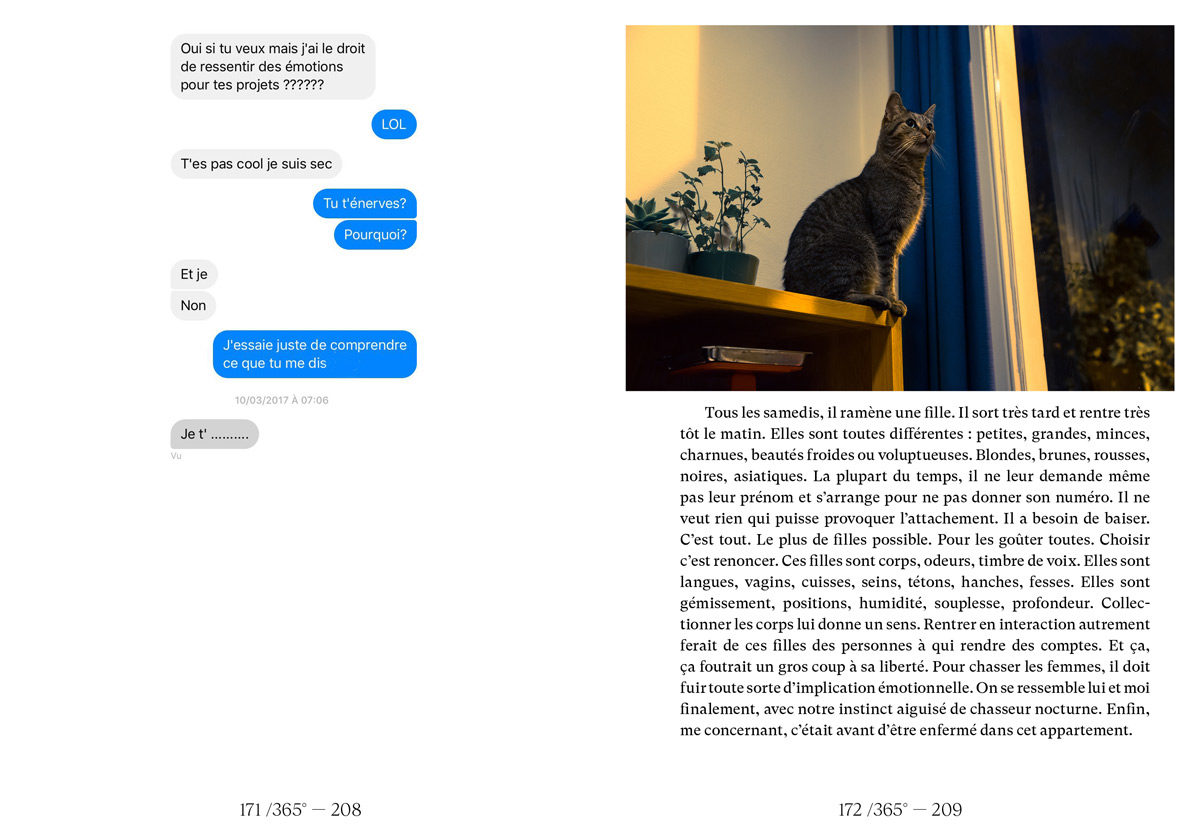
Who inspired you?
Sophie Calle and her ability to create art from intimacy. I like to use it as a pretext, a matter that you can distance yourself from through art. I work from questions, and heartache, and I then find echos of it in others – to create a bound, or just laugh about our failures.
Love thus become a creative driving force…
Absolutely. Ever since I started creating, I’ve always compared love to art. They both trigger emotional turmoil. This might be because I love react in a passionate and visceral way to things – in love and in art.
Is 365 degrés (D’amour) a declaration of love, or a fit of anger?
There are hope, anger, and a certain disarray in the book, but it is all part of my tribute to love! I’ve always considered loving feelings to be driving forces, no matter which way we go, they push us to act, move, evolve. Sometimes, they transform us deeply.
Why did you choose this title?
For the number of stories told. It is like a children’s book: a story each night! And this is also its main theme: love in everyday life. I wanted to play with the word degree – a unit of measurement used both for geometry and meteorology. It fits all the forms of love we encounter and cannot quantify. But I know one thing for sure: they are all cyclic. When I find myself in a new situation, I sometimes read back some extracts and discover that I feel the same way as I did before – it is quite unsettling actually.
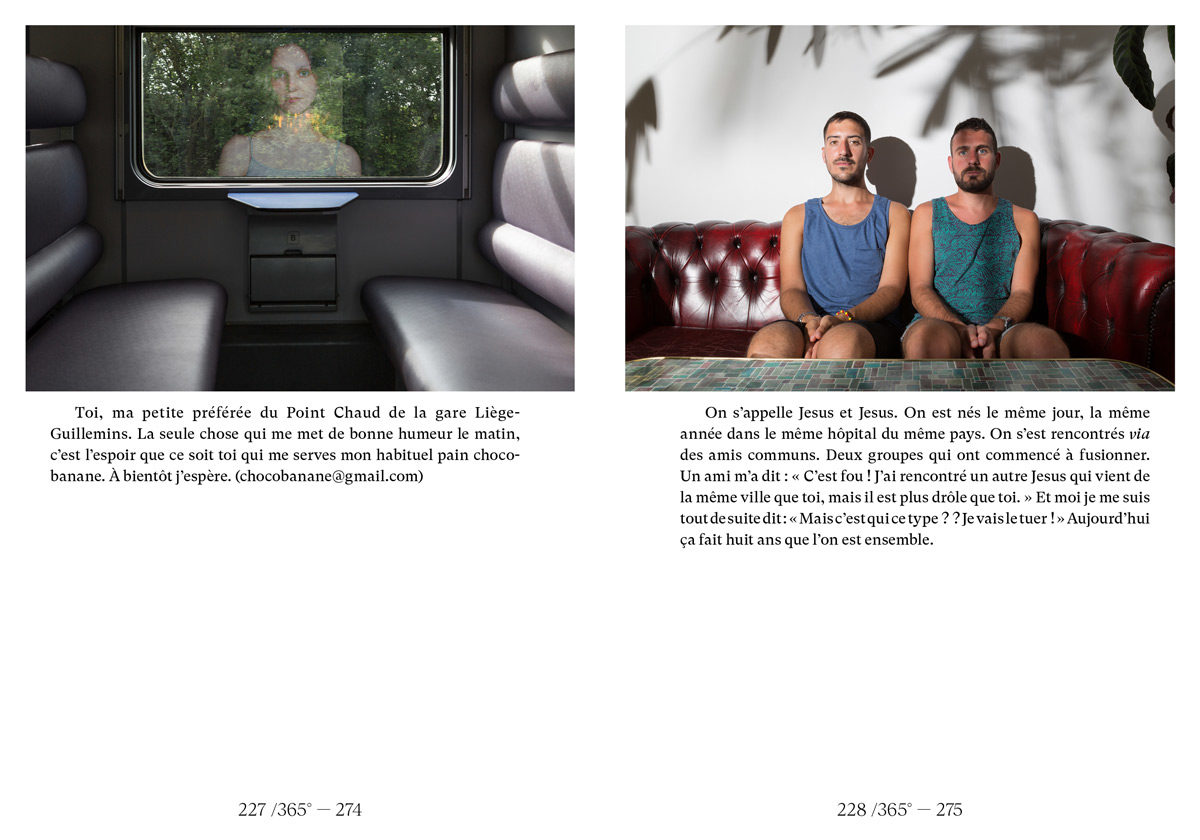
Who is this book for?
For all the people curious about love, asking question and not excepting answers.
Is there something this book does not show about love?
I don’t have the will, nor the ambition to be exhaustive. There are as many ways of loving someone as they are people on Earth. One thing I do know is that love is conditioned by an era, a culture, and the society we live in.
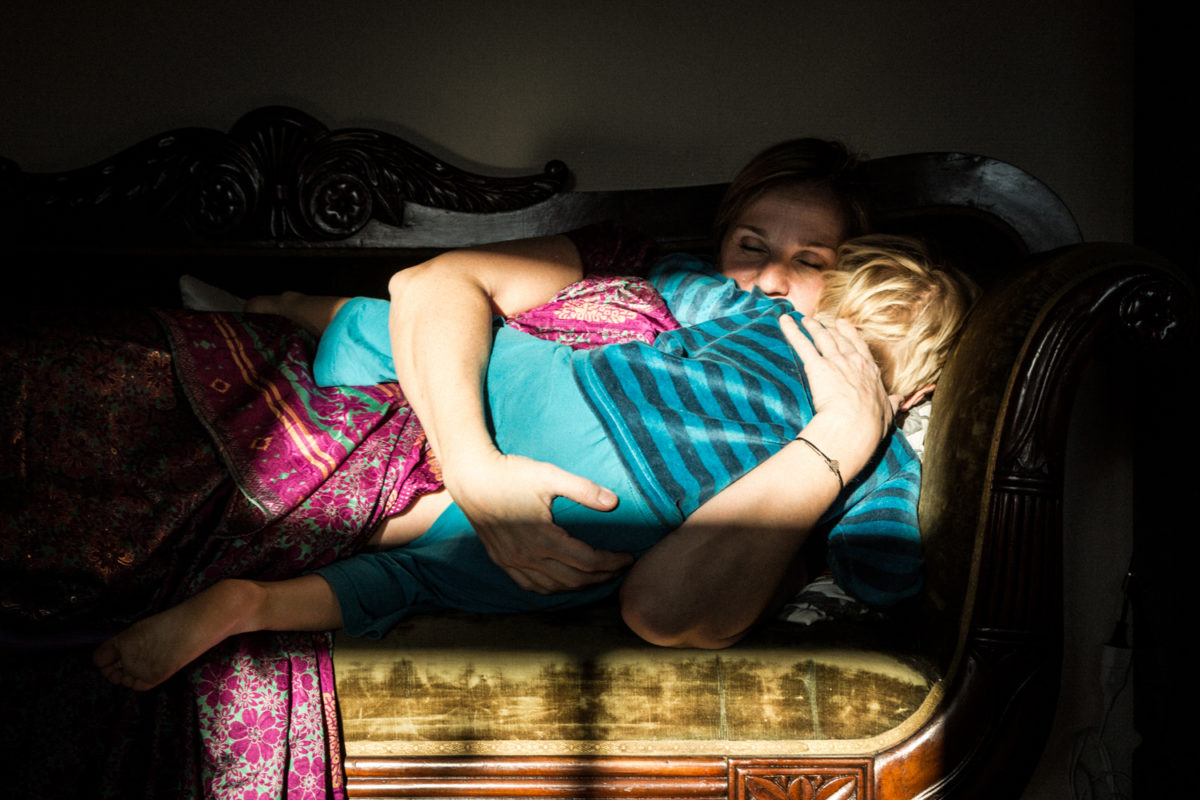
You inserted conversations from social media and dating apps in your book, and chose a format focusing on testimonies… Is it also a reflection on the way we communicate our love, or our absence of love?
This book is a contemporary radiography of our relations. Most of the authors are between 20 and 40 and live in the city – the testimonies are part of a certain type of ethnography. Today, we mostly communicate in writing, via our Smartphone. So I integrated conversations on Messenger, Tinder, texts etc.
Love and hate via these conversations are fine, but working on a meaningful relationship requires true communication. Digital has given birth to violent and careless exchanges. Our screens help us hide, and escape from reality. These new modes of communications will have consequences on our psyche. Nothing beats a face-to-face conversation. It helps get rid of any ambiguity. Long hand-written love letters have become rare and that is a shame.
What did you learn through this work?
It helped me open up my mind. I’ve also realised there were no good or bad situations: they all have their pros and cons. Whatever we’re living, nothing is permanent, nothing is set in time.
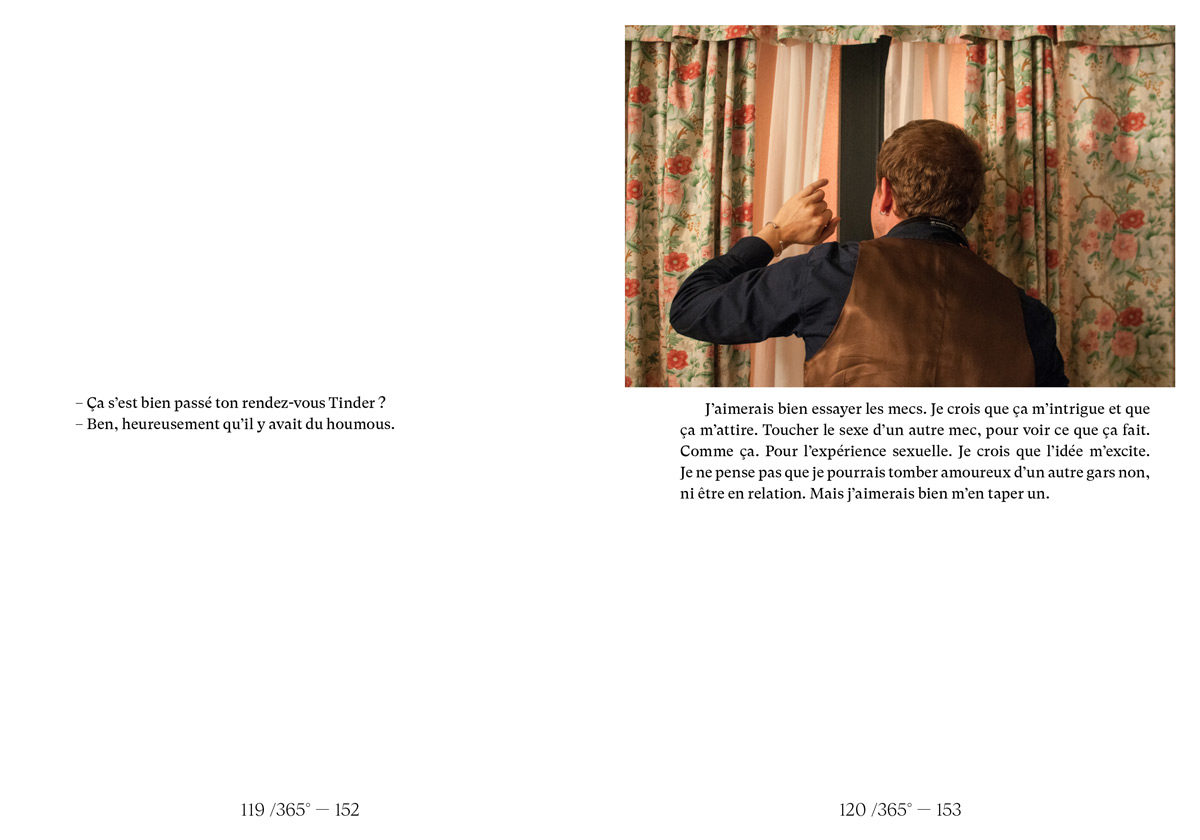
What is your vision of love today?
I feel like we are in a transition phase. I don’t know how long it is going to last. If our society collapses and another one rises, relations will probably be transformed.
Now more than ever – with the spread of Coronavirus – we need love. What do you think about this situation?
Many people end up reflecting on their relationship and their nature. Deep bounds are essential. Scrolling social media, and endlessly refreshing profiles of strangers has turned us into passive spectators, needing to compare ourselves to others, thus causing frustration. There are many possibilities of living your life. Our current situation proves that even though we enjoy a great freedom, we are still depending on each other.

Would you recommend reading 365 degrés (D’amour) during the quarantine?
Everything – and it is normal – currently brings us back to Coronavirus. We cannot project ourselves, nor escape. Reading is an amazing way-out! It helps us disconnect, and reconnect with ourselves. Reading is a way to access another reality, another state. Confinement is physical and mental. I recommend 365 degrés (D’amour) to everyone having problem focusing, because it can be read in several stages.
Any other advice?
Let us be in love. Or rather, let us think about the quality of our bounds – this is essential. This is was will save us, I am convinced of it. It is time to reenchant love.
365 degrés (D’amour), Loco editions, 25 €, 472 p.
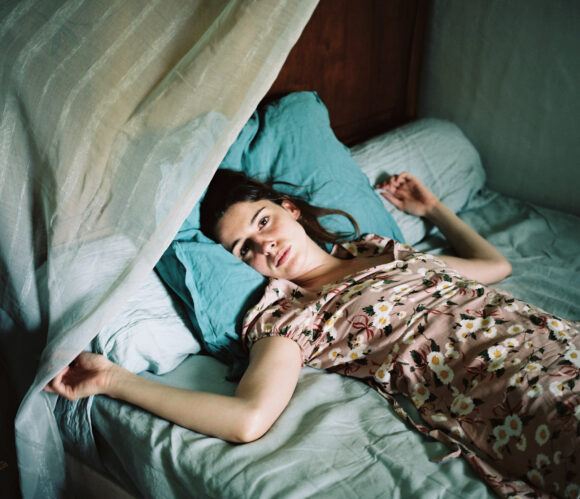

© Alice Khol

